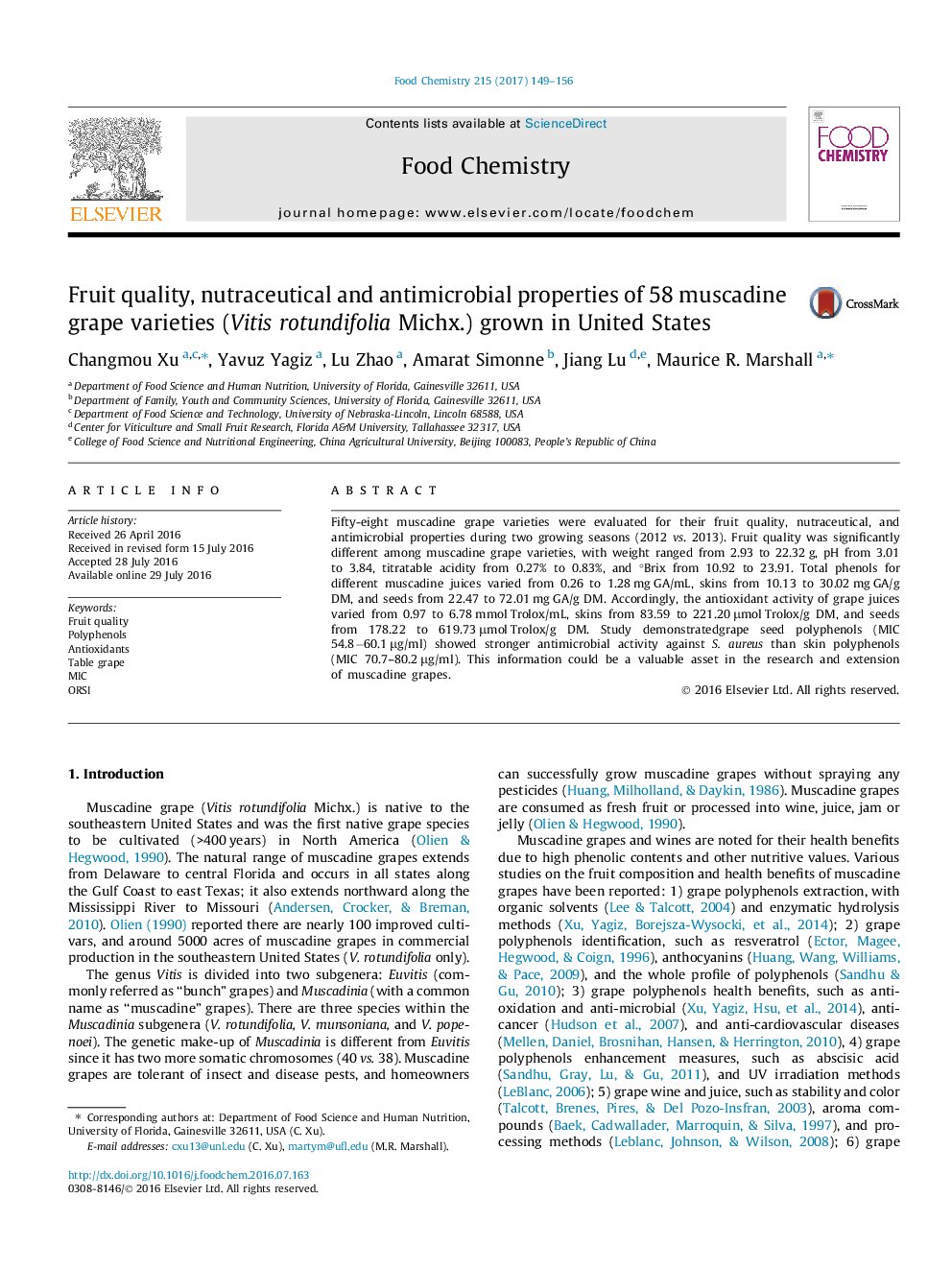| Article ID | Journal | Published Year | Pages | File Type |
|---|---|---|---|---|
| 1183717 | Food Chemistry | 2017 | 8 Pages |
•The composition and nutrition of 58 muscadine grape varieties were evaluated.•The correlations of muscadine grapes’ properties were revealed based on the data.•Ten muscadine grape varieties were recommended to be the best choices as table grapes.•This study provided valuable compositional information for muscadine enthusiasts.
Fifty-eight muscadine grape varieties were evaluated for their fruit quality, nutraceutical, and antimicrobial properties during two growing seasons (2012 vs. 2013). Fruit quality was significantly different among muscadine grape varieties, with weight ranged from 2.93 to 22.32 g, pH from 3.01 to 3.84, titratable acidity from 0.27% to 0.83%, and °Brix from 10.92 to 23.91. Total phenols for different muscadine juices varied from 0.26 to 1.28 mg GA/mL, skins from 10.13 to 30.02 mg GA/g DM, and seeds from 22.47 to 72.01 mg GA/g DM. Accordingly, the antioxidant activity of grape juices varied from 0.97 to 6.78 mmol Trolox/mL, skins from 83.59 to 221.20 μmol Trolox/g DM, and seeds from 178.22 to 619.73 μmol Trolox/g DM. Study demonstratedgrape seed polyphenols (MIC 54.8−60.1 μg/ml) showed stronger antimicrobial activity against S. aureus than skin polyphenols (MIC 70.7–80.2 μg/ml). This information could be a valuable asset in the research and extension of muscadine grapes.
